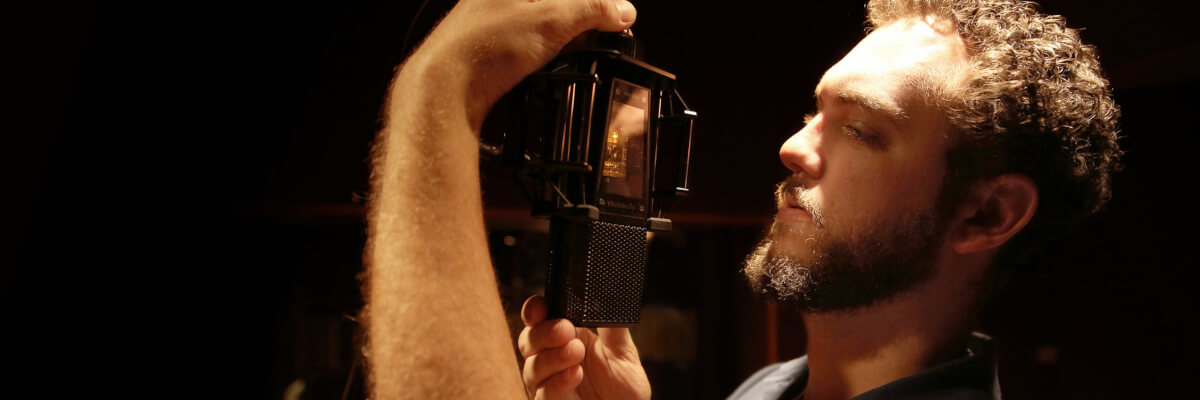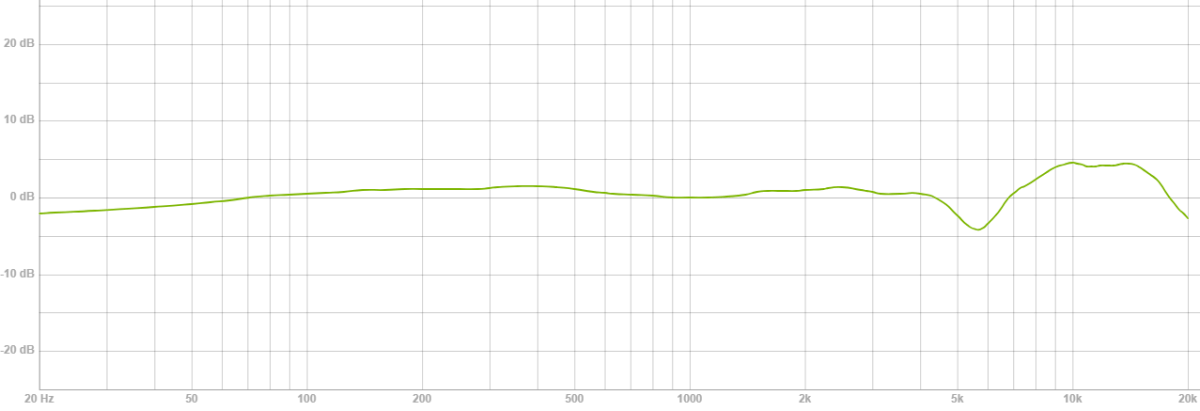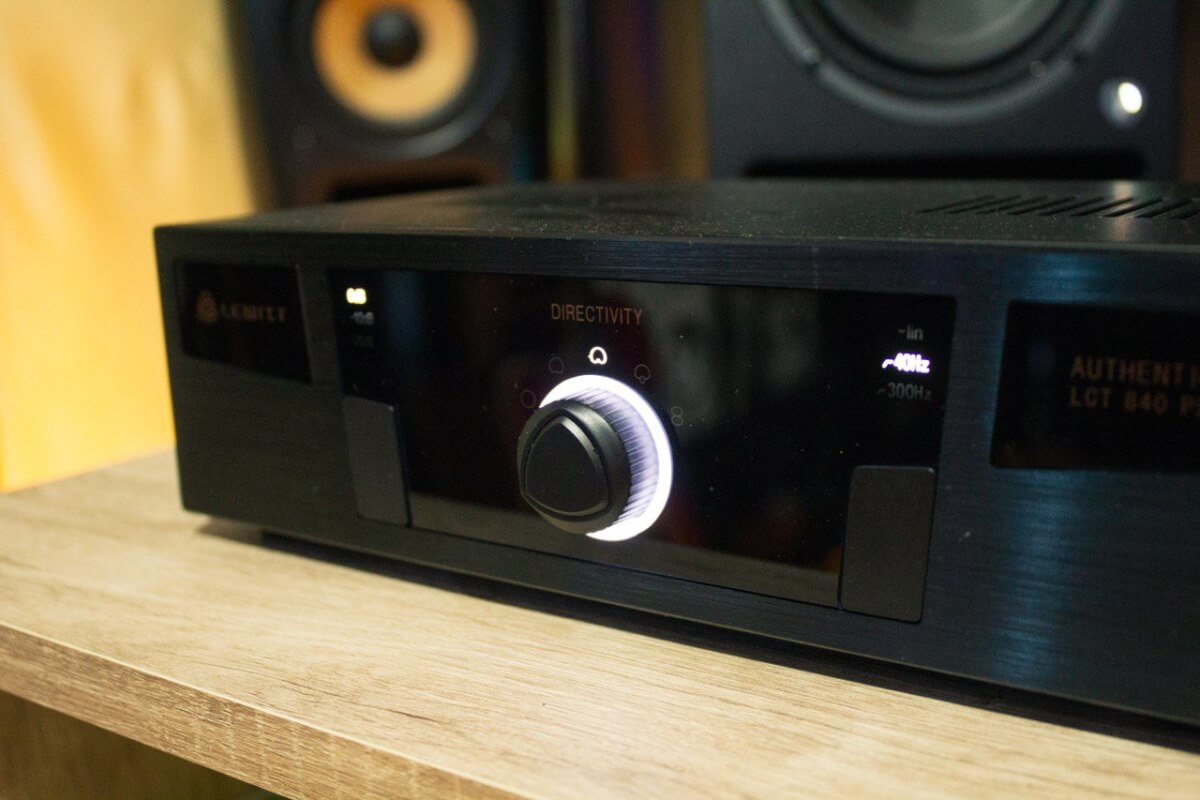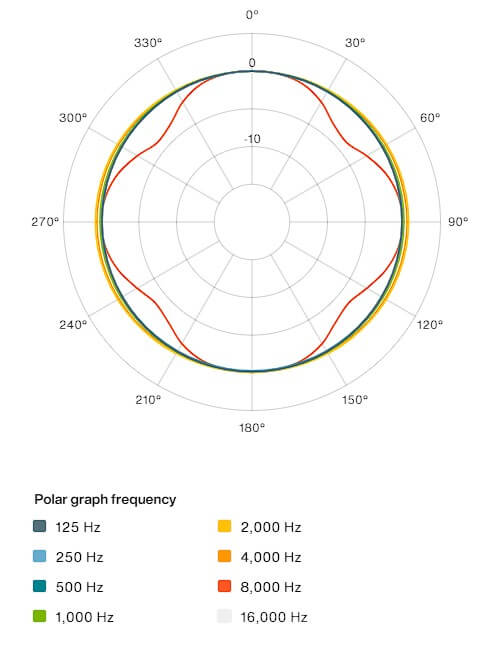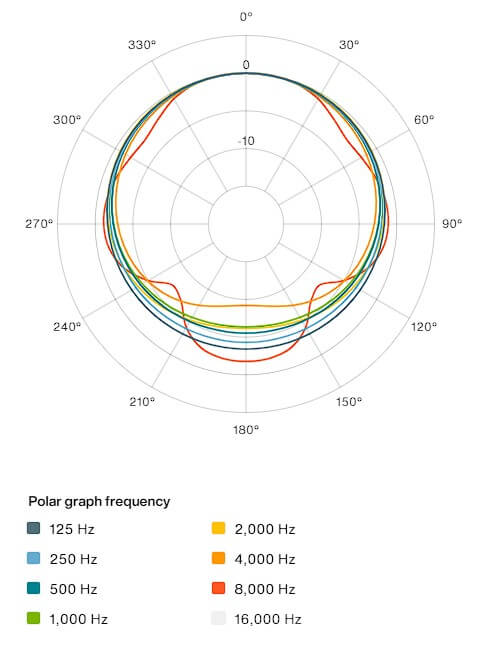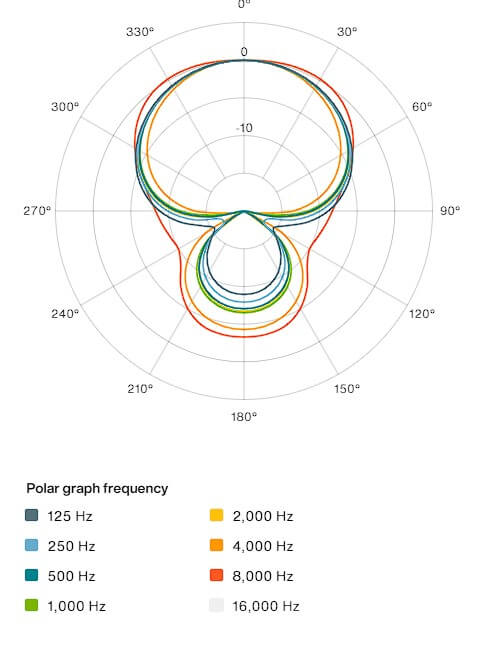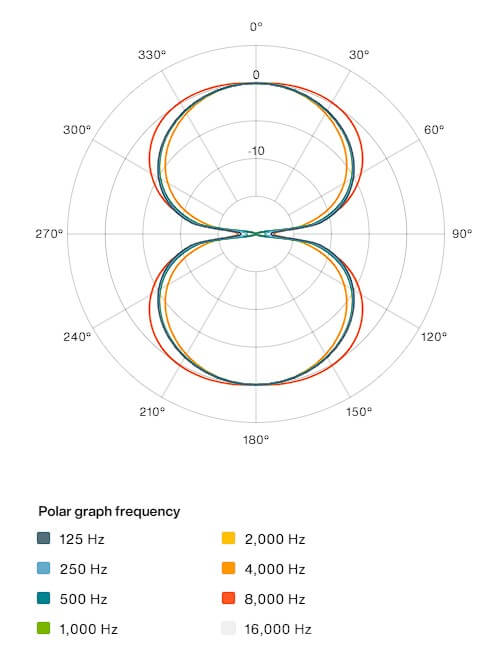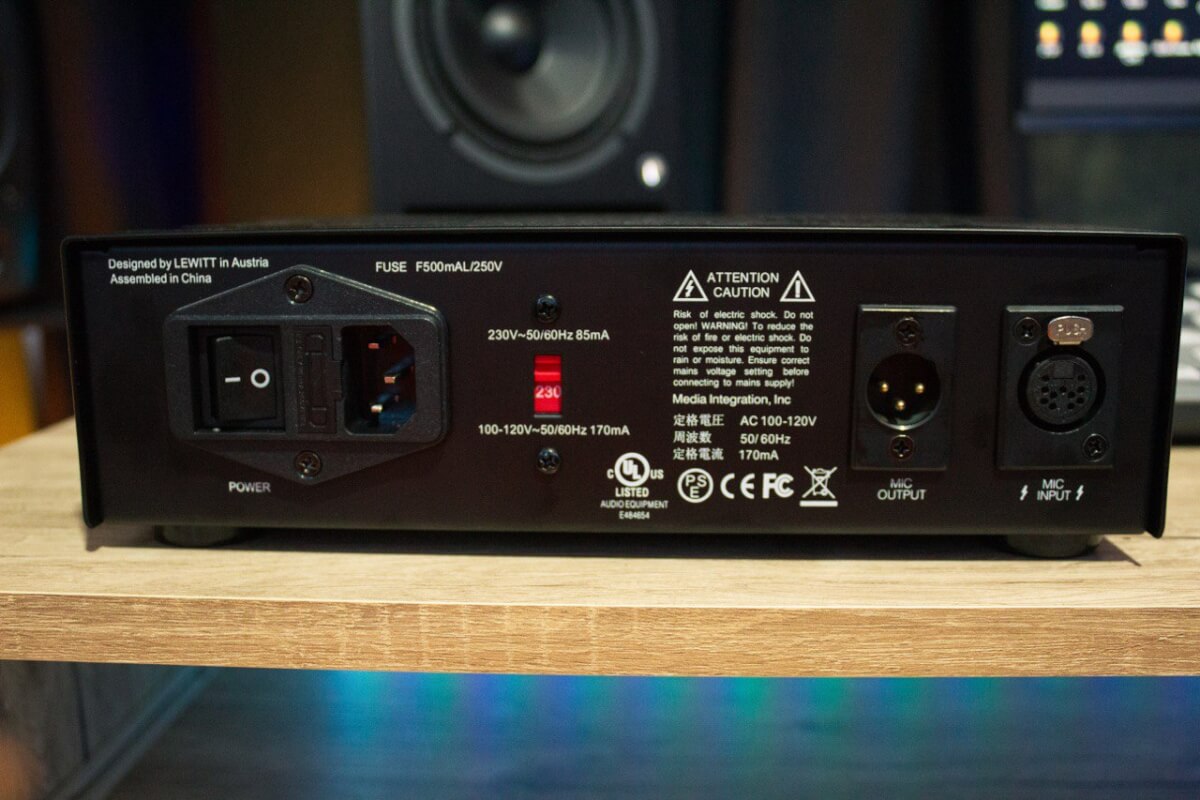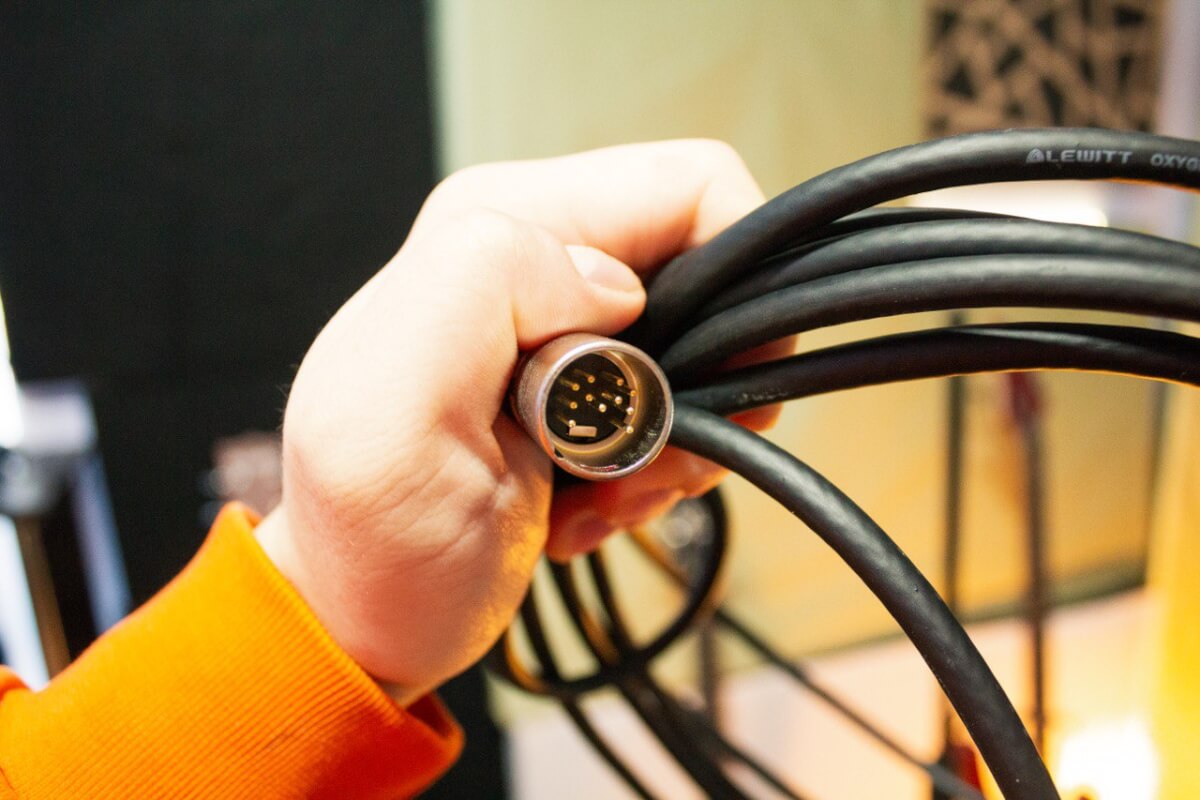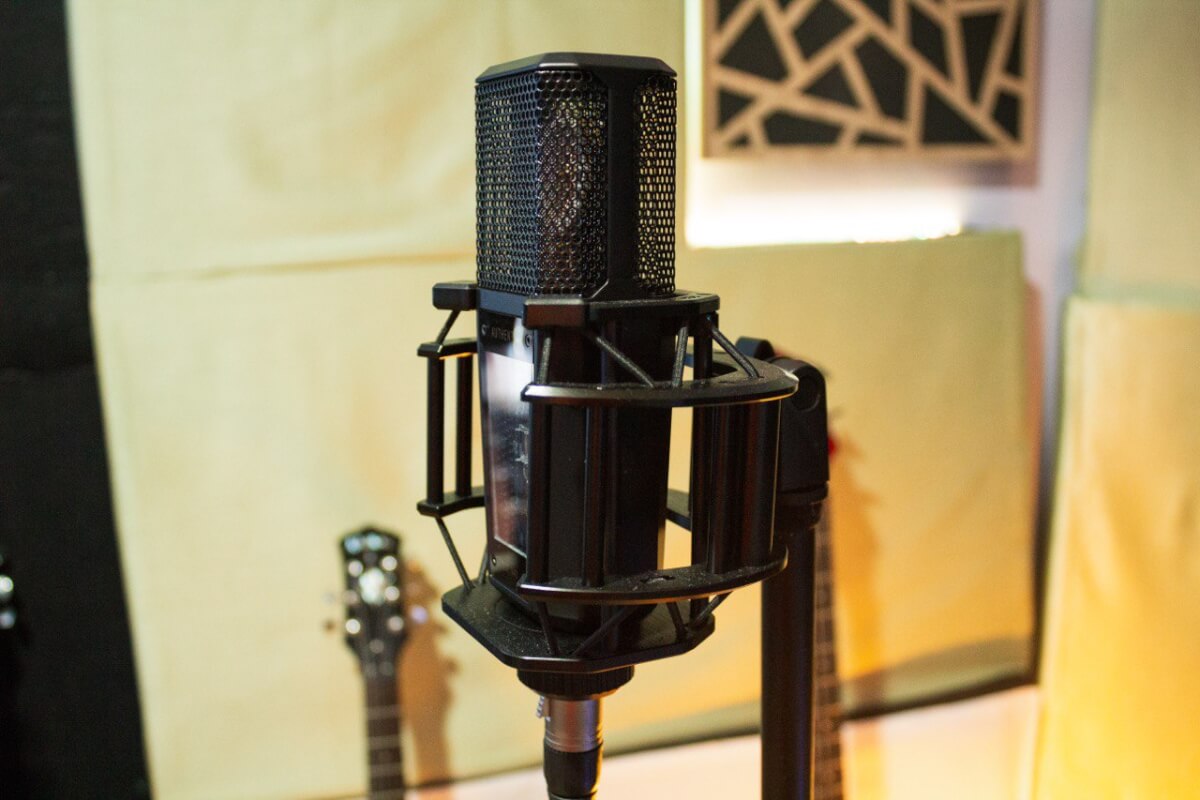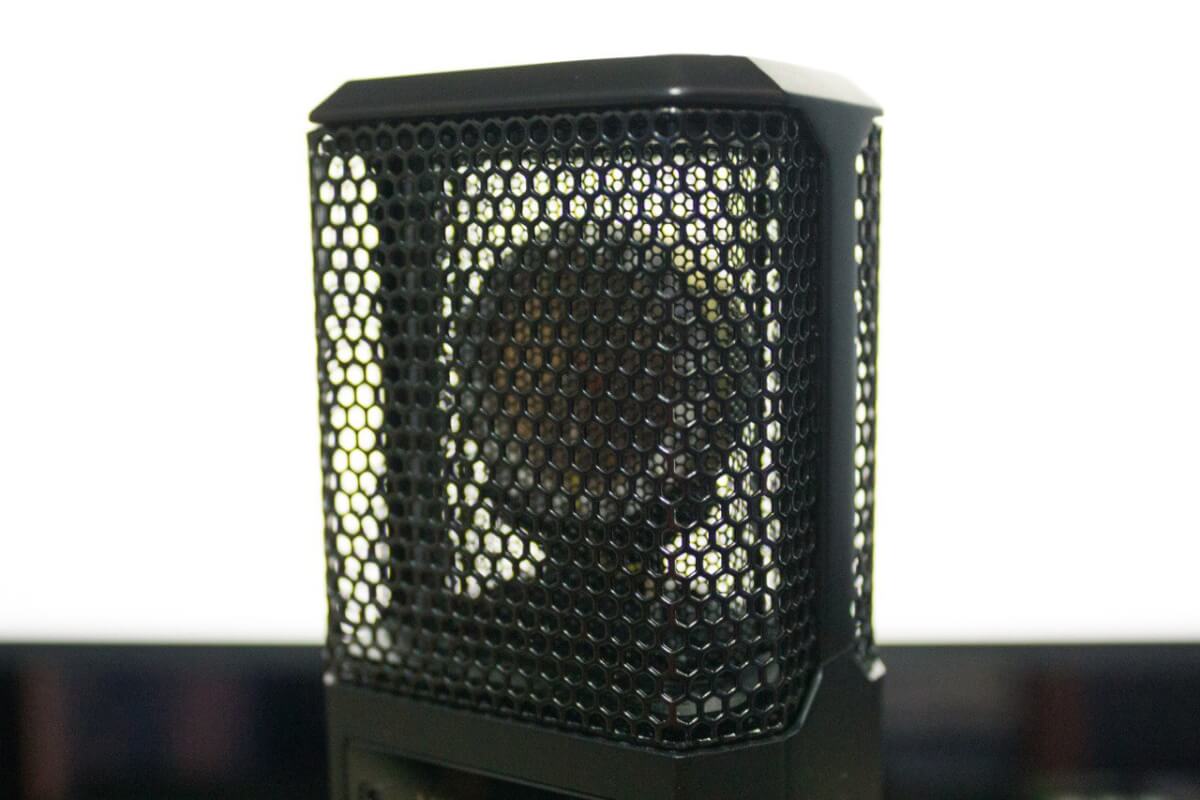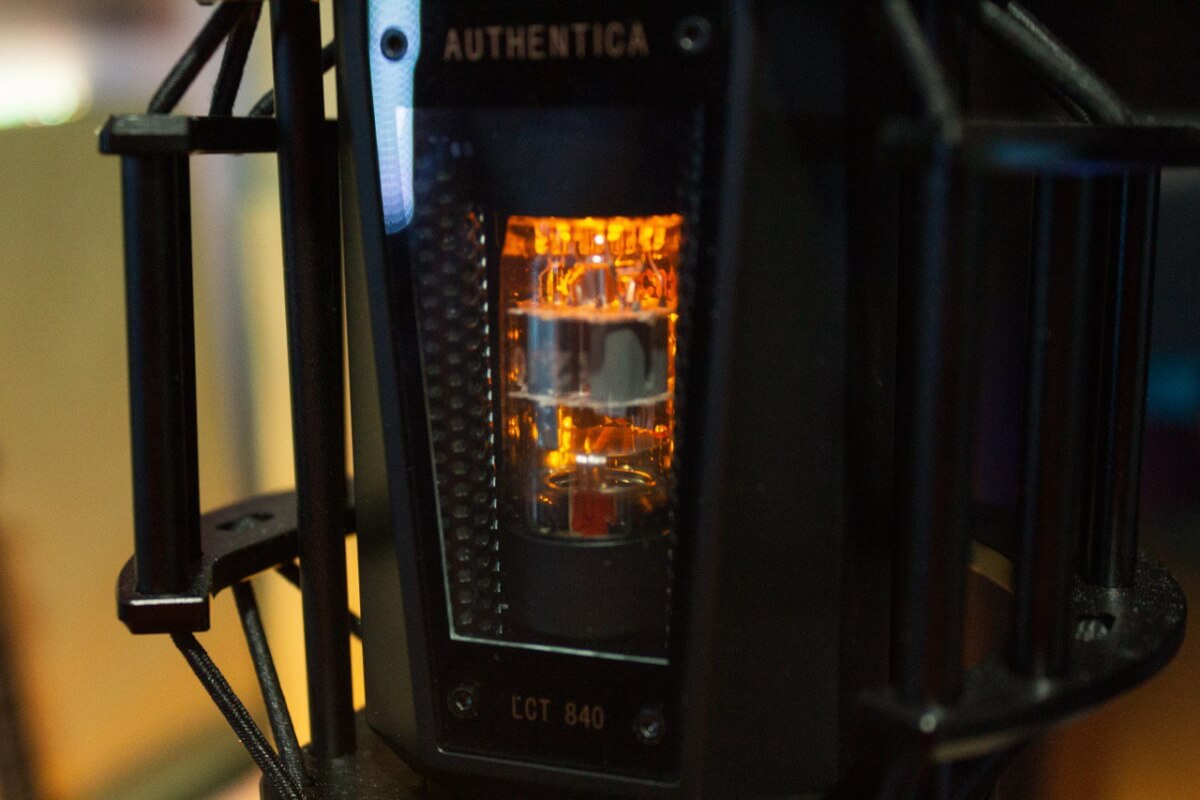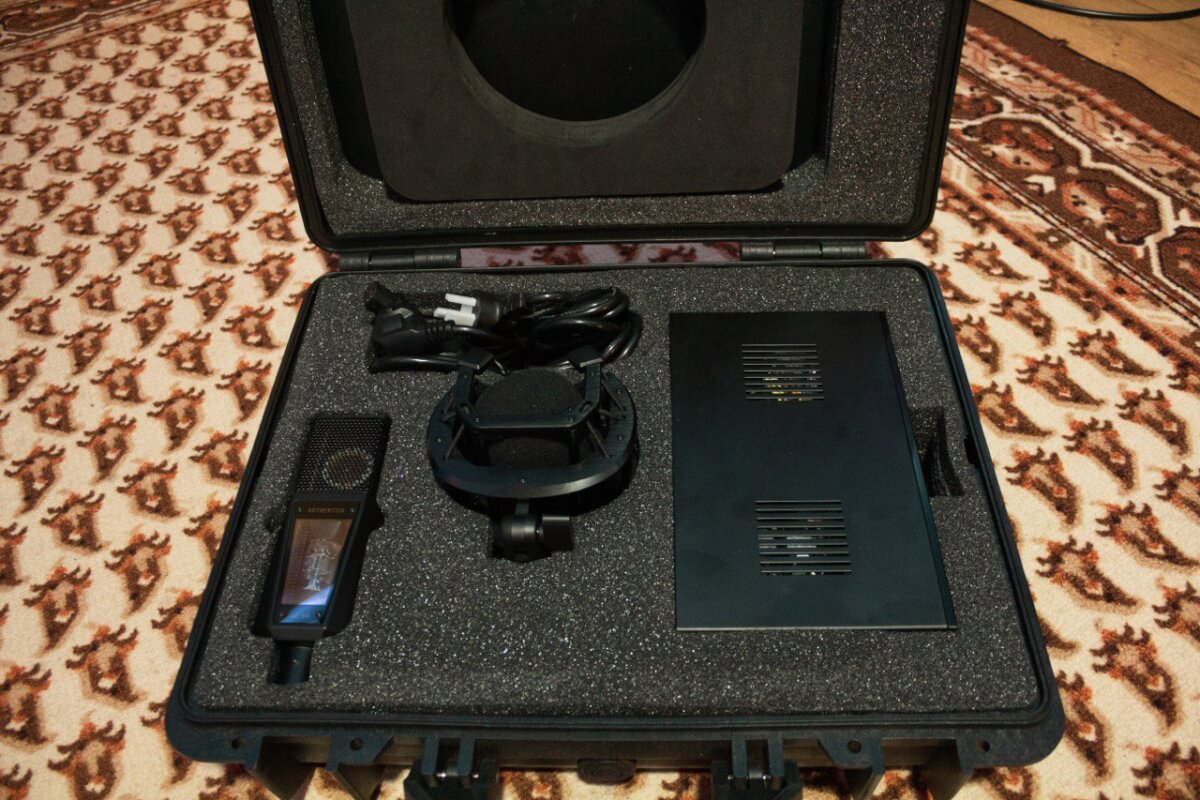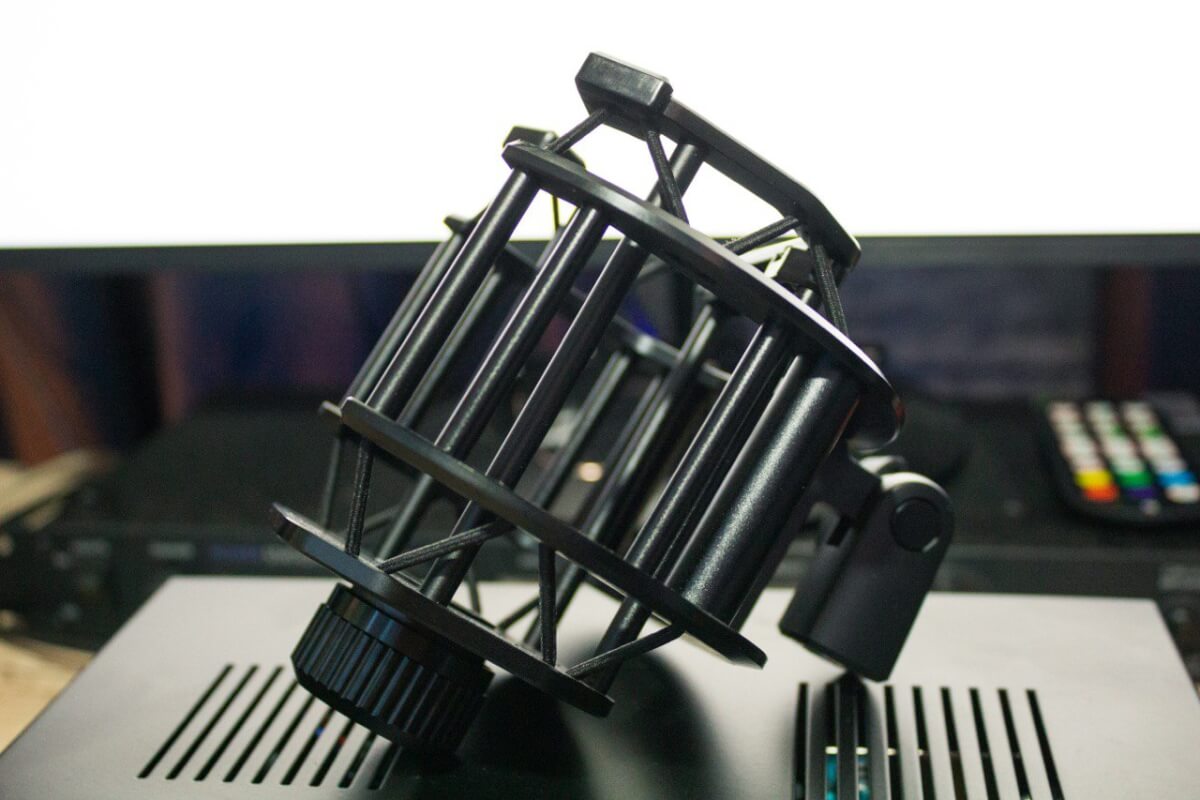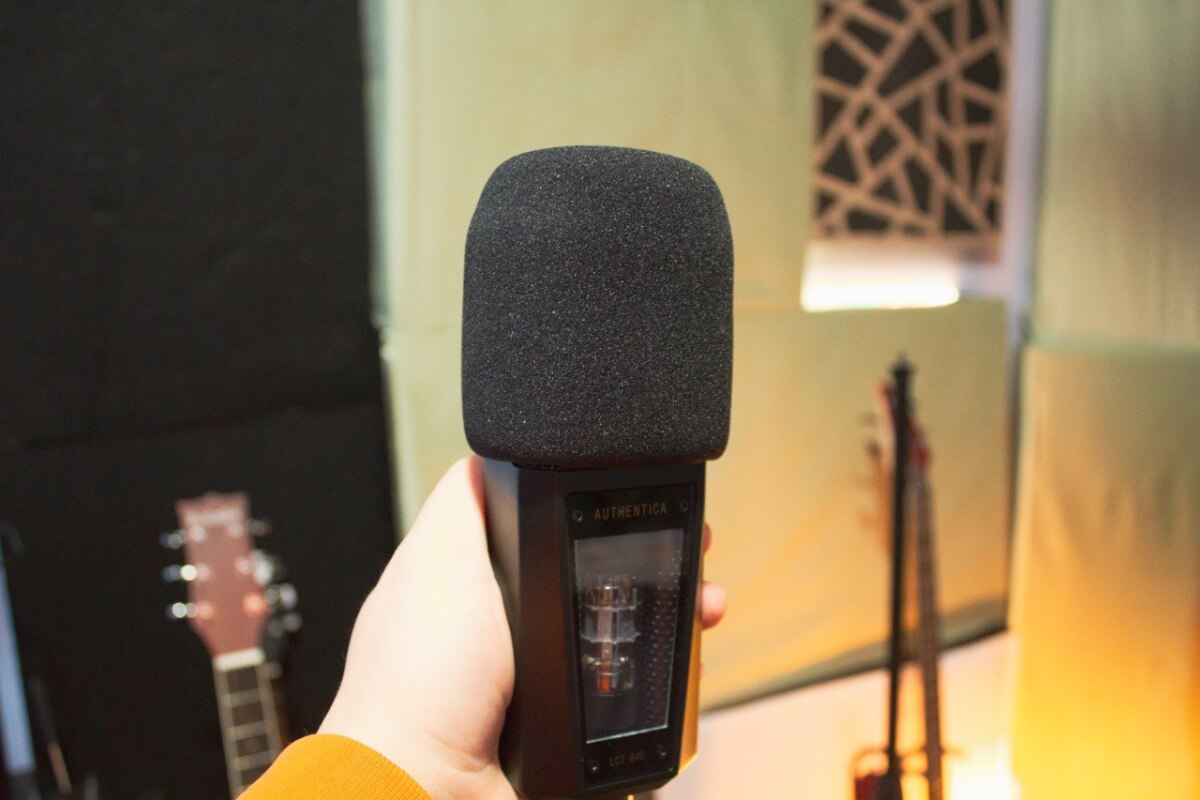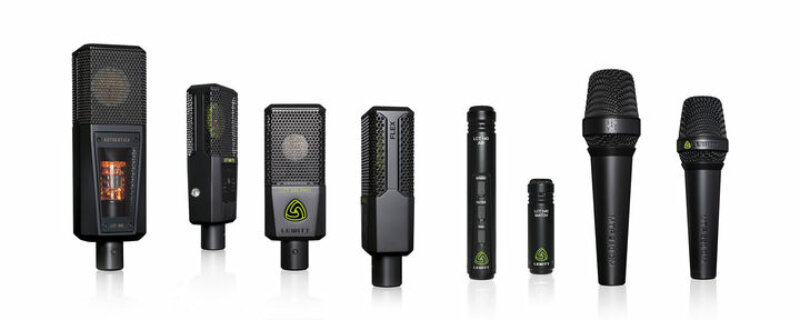In this review, I’ll discuss the positives and negatives of the Lewitt LCT 840 microphone, as well as my overall impressions and whether it’s worth its price point. The microphone impressed me, so it earned the top spot in our studio microphone ranking.
⚙️ Lewitt LCT 840 – Specifications:
- Type: Capacitor with external polarization
- Aperture: gold plated 3 microns.
- Ø capsule: 25.4 mm, (1 inch)
- Directionality: omnidirectional, wide cardioid, cardioid, super cardioid, figure eight
- Frequency range: 20 – 20,000 Hz
- Sensitivity: 23 mV/Pa, -33 dBV/Pa
- Signal-to-noise ratio: 85 dB (A)
- Max. SPL for 0.5% THD: 139 dB, attenuation 0 dB
- Dynamic range: 130 dB (A)
- Internal impedance: 200 ohms
- Weight of the microphone: 662 g.
- Weight of the power supply: 1894 g.
- Microphone dimensions: 192 x 60 x 46 mm.
- Power supply size: 250 x 150 x 70 mm.
- Case for storage and transportation.
- Microphone.
- Documentation.
- Inter-block cable for connecting the microphone and power supply.
- Spider-holder.
- Windproofing.
- Power supply.
- Power cables for the microphone power supply.
🤔 How does it sound?
The sound of the Lewitt LCT 840 microphone is open, bassy and warm. I recently reviewed the Lewitt LCT 540S and Lewitt LCT 640 TS, where I was surprised by the detail and clarity of these microphones. The Lewitt LCT 840 inherits the detail and precision of its younger brothers, but the 12AX7 tube brings character to the sound. Vocals, guitars, strings and wind instruments begin to sound not just clear, but full of bottom end (velvet). The microphone gives “body” to the sound, which makes it sound close and intimate. This is exactly what a tube microphone should give, warm, close and rich sound.
Graph of the AFC in linear mode:
The sound is provided by a one-inch LC10 dual diaphragm capsule. It is combined with a 12AX7 tube to produce a stunning sound reproduction.
Below I have attached a recording of my voice, my clients’ vocals and acoustic guitar recorded in Lewitt LCT 840 with Arturia AudioFuse Studio soundcard. The recordings are unprocessed, at the same Gain level. For more examples, I recommend visiting the official Lewitt. website.
- Low frequencies are massive, warm, voluminous. Vocals have body (velvet low frequencies). The microphone creates a slight muttering in the lower midrange (180-300 Hz), but this can be controlled by the “proximity” effect (proximity of the sound source to the microphone) or by using EQ or multi-band compression in post-production.
- The midrange is detailed and accurate. Voice articulation is excellent, the microphone naturally reproduces the timbre of vocals and instruments. The harsh region (2-4 kHz) is not sparkly, there is no phonation. The microphone sounds good with both matte and bright voices.
- High frequencies are airy, open. There is no “chicanery” like the Lewitt 440 Pure. The top is reminiscent of the Neumann TLM 103 and U87. Balanced and easy to handle.
I am satisfied with the sound. This microphone is amazing from the first seconds of recording on it. The lamp saturates the signal with warmth and fullness. At the stage of recording you already get a collected and rich sound. Previous models such as Lewitt 440 Pure, Lewitt 540 S, Lewitt 640 TS surprised me, but not as much as our review. This mic is an excellent choice as a basic workhorse for the recording studio.
🛒 Buy Lewitt LCT 840 microphone:
📢 Management and functionality

Attenuator
The Attenuator can be useful for recording loud sources, such as taking sound from a cabinet or electric guitar combo amp. The Attenuator has 3 modes available:
- 0 dB – standard mode.
- -10 dB – introduces a 10 dB reduction in the input signal.
- -20 dB – introduces a 20 dB reduction in the input signal.
Low Cut Filter
Low Cut Filter allows you to cut off unnecessary low frequencies. There are 3 Low Cut Filter modes available:
- Line is a standard mode that does not make any changes.
- 40 Hz – cuts off low frequencies below 40 Hz.
- 300 Hz is a radical filter mode that cuts off anything below 300 Hz.
Interchangeable directional diagram
The directional pattern is an additional option that can be useful for recording vocals or instruments. The changeable directional pattern is controlled by the center knob on the power supply. The selected mode will be highlighted by a white indicator. When the center knob is pressed, the selected mode will be locked and cannot be changed. To cancel the lockout, press the button again until it lights up white.
What orientations are available?
Omnidirectional (Circle)
Wide cardioid
Cardioid
Super cardioid
Eight
An interchangeable directional pattern gives you the ability to record guitar and vocalist in figure-eight mode. Conduct a podcast with just one microphone. Record percussion instruments in circle mode. Record acoustic guitar by selecting the appropriate mode. If you want more guitar and room, choose omnidirectional mode, and if you want a focused guitar sound, record in cardioid mode. The changeable directivity diagram will free the hands of sound designers and give a flight of fancy in sound recording.
On the rear side of the power supply unit are the connectors:
- Mic Input – a unique 11 pin connector for connecting to a microphone. The 48V phantom power is provided by the power supply, you don’t need to turn it on on the sound card!
- Mic OutPut – XLR output for connection to a sound card or preamp.
- 120V – 230V – selection of mains power supply.
-
- Power connector – connection of the power cable included in the package.
- Power – turns on the power supply.
The microphone controls are intuitive. It takes about 10 minutes to figure it out. All the main buttons and controls are placed on the front panel and have white backlight indicators. I was satisfied with the control and functionality. You can use the microphone right out of the box without any problems. Installation of the power supply and microphone takes no more than 5 minutes.
💎 Appearance and build quality
Appearance. Like all Lewitt microphones, the Lewitt LCT 840 looks nice and stylish. The microphone has impressive dimensions of 192 x 60 x 46 mm. The color scheme is the usual black with gold lettering on the front panel.
On the back of the microphone is the green Lewitt logo, which cannot be confused with anyone else 😎 .
The microphone capsule is protected by a double metal grill. An outer large mesh and an inner one with a smaller cross-section. The capsule is confidently protected, that’s the main thing.
The front panel of the microphone is transparent. It is covered with acrylic glass. Under which you can see the lamp (12AX7) of the microphone. When you turn on the power supply, you can see how the lamp gradually gets hotter. This gives a visual impression 😉 .
Build at an excellent level. The microphone is completely metal. The quality of materials is reference. Components are fitted well, nothing protrudes, does not crunch, under the fingers does not sag. Acrylic glass is strong, can withstand strong pressure on it.
🎙️ Kit with microphone
The microphone will arrive in a well-protected case. Storage and transportation of the microphone will not be a problem.
The Spider Holder is metal. The microphone sits securely in it and is clamped by the ring. The spider also has additional holders on the sides to hold the microphone tightly. Like most spiders, the vibration suspension is made of rubber bands. Vibration dampening is excellent.
If you install the spider upside down (i.e. with the microphone facing down) you don’t have to worry. The spider holds the microphone perfectly. It will not fall out.
The Windshield is different from those with the Lewitt 540 S and Lewitt 440 Pure. Why couldn’t they make a branded wind shield? That remains a mystery. But the one that comes with the microphone does the job. You can cover the microphone to keep it dust-free or use it when recording your voice. At a distance of 10 cm. from the microphone, the wind shield can handle explosive letters (B, P, C, etc.).
Although it looks less attractive, I can turn a blind eye to it. As it is the only disadvantage of the kit and the whole microphone 😎 .
🎤 Lewitt microphones
Lewitt has a wide selection of microphones. Their lineup includes classic condenser microphones and tube microphones. Instrument microphones and dynamic microphones. I’ll give you a few examples:
- The Lewitt 240 PRO is a budget electret microphone for aspiring musicians and producers ($170).
- Lewitt 440 Pure is a mid-budget condenser microphone with a neutral sound. (300$).
- The Lewitt 540 S is a mid-budget microphone with great sound and low self-noise ($700).
- Lewitt LCT 640 TS is an expensive microphone with great sound and a replaceable diaphragm and dual XLR connection ($1,000).
- The Lewitt LCT 840 is our reviewed, expensive tube condenser microphone for recording vocals and instruments. (1200$).
We have reviews of the microphones presented here and I recommend you to familiarize yourself with them. The Lewitt LCT 840 is the best among all of them, and it’s not strange. The sound, equipment and versatility of this microphone is the best among the others. For full acquaintance with the catalog I recommend you to visit the site Lewitt.
🏆 Bottom line
The Lewitt LCT 840 is a professional microphone for vocalists, musicians and recording studios. This tube microphone can make your recordings even better. It should be considered for purchase by professionals. The Lewitt LCT 840 will be a versatile microphone in the studio.
I’ve used the Lewitt 240 Pro, Lewitt 440 Pure, Lewitt 540 S, Lewitt LCT 640 TS and have been pleased with the sound. The Lewitt LCT 840 was a new experience with a top-of-the-line microphone. The lamp that stands in the microphone bring amazing character to the sound. I have never had such a versatile microphone before. Recording vocals, guitars, picking up a combo, recording percussion instruments – the Lewitt LCT 840 can handle it all.
The Lewitt LCT 840 is totally worth the $1300 price tag and would be a great choice for professionals 😎 .
I look forward to your comments below, if you have such a microphone, share your experience will be interesting to read 😉 .
💸 Purchase the Lewitt LCT 840 microphone:
✅ Briefly about Lewitt
Roman Pershon is the man who founded Lewitt. After reaching the role of project manager at AKG, Roman felt empowered to create something of his own. In 2008 he quit his job at AKG and went in search of companies that could help him create a small miracle. In Australia he met Ken Young, who believed in Roman’s ideas and so began the story of the “green” Lewitt company.




